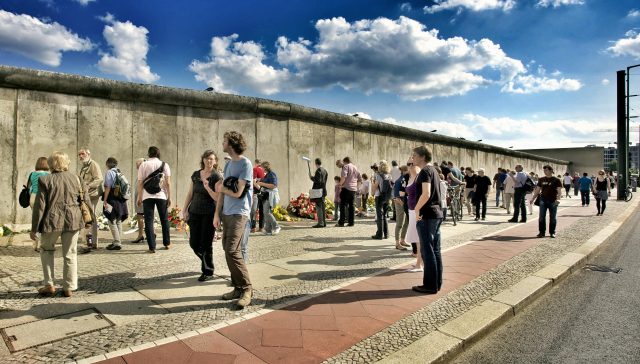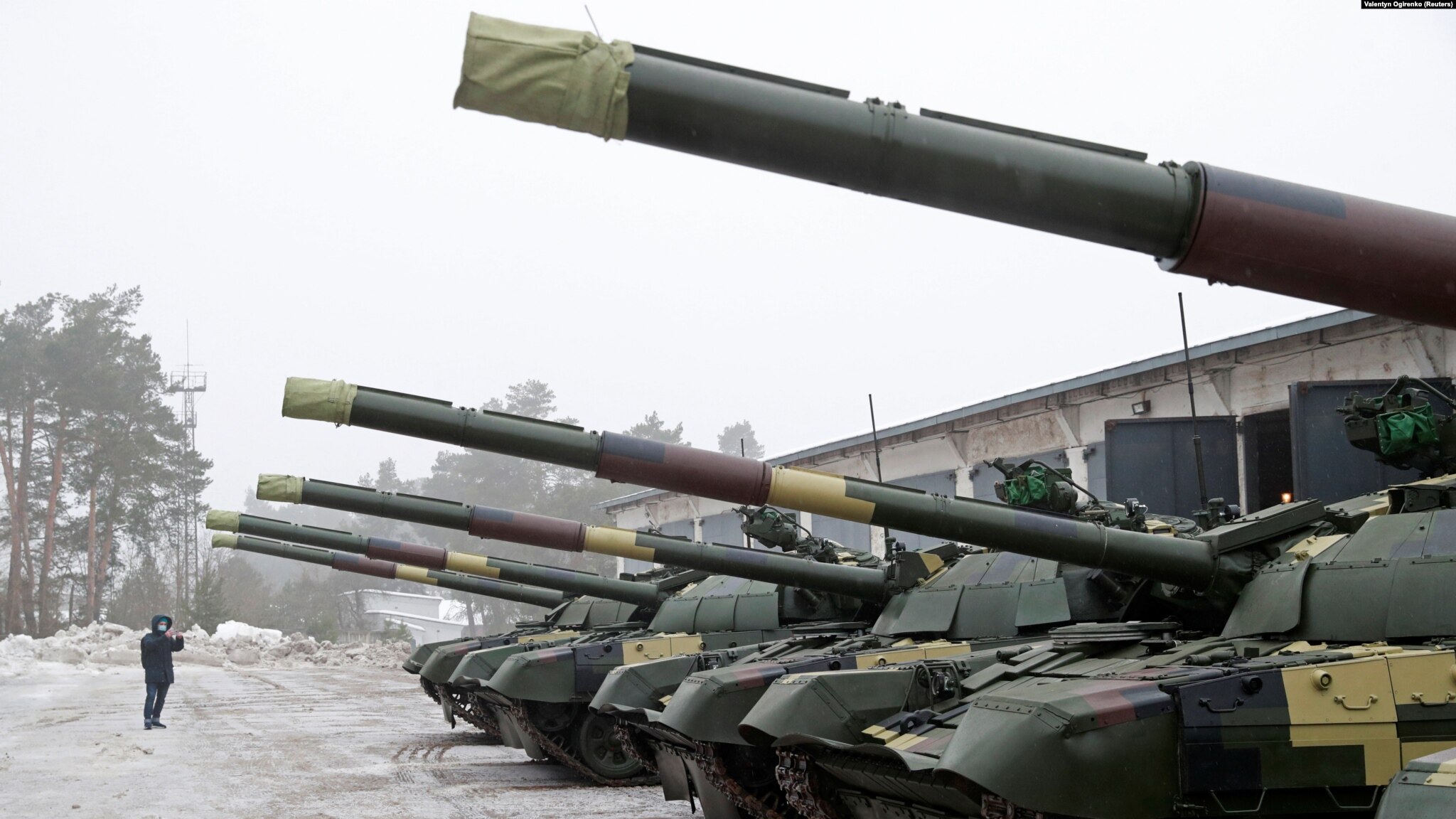
In a sombre atmosphere caused by the country’s severe government crisis (the biggest government crisis since 2005), Germany marked the 35th anniversary of the fall of the Berlin Wall last weekend. The motto for the celebrations of this historic and momentous event for Europe, which took place on the 9th of November 1989, was “Keep Freedom”. Along a 4 km stretch of the former route of the wall, the organizers erected an outdoor installation made up of replicas of placards from the East German demonstrations of November 1989. Alongside placards from 35 years ago, thousands of other “freedom” placards created by citizens were displayed. The installation created by the organizers went past the Reichstag building, the Brandenburg Gate and the famous Checkpoint Charlie (what was the main East-West crossing point). These sites were the scene of weeks of East German demonstrations 35 years ago, which eventually led to one of the happiest moments in European history, the fall of the Berlin Wall. Activists from around the world (including exiled Belarusian opposition leader Svetlana Tikhanovskaya and Iranian dissident Masih Alinejad) were invited to this year’s celebrations. The weekend’s events in Berlin commemorated the “Kristallnacht”, when on the 9th of November and the 10th, 1938, the mass slaughter and looting of Jews by the Nazis took place. On that night at least 90 Jews were killed and tens of thousands more were deported to concentration camps. On Kristallnacht, meanwhile, Jewish-owned shops and businesses were destroyed and 1,400 synagogues were burned down in Germany and Austria.
“It is very important for our society (…) to draw the right lessons from these events,” the German government said.
Russian punk protest group Pussy Riot performed in front of the former headquarters of the Stasi (the dreaded East German secret police). The persistent political divisions between West and East Germany are reflected this year-end by recent elections held in September in three regions of the former GDR. In these elections, the far-right Alternative for Germany (AfD) achieved historically high results. A new far-left grouping also made significant inroads, prompting a government crisis. At a time when anti-Semitic acts in Germany have been on the rise following Hamas’ unprecedented attack on Israel, which triggered the war in the Gaza Strip. It should be recalled that both political parties oppose military aid to Ukraine to repel the Russian invasion.
One of the most notable political crises in post-reunification Germany was in 2005, when Chancellor Gerhard Schröder, at the head of a Social Democratic (SPD) government in coalition with the Greens, lost the support of the parliamentary majority because of controversial economic reforms and growing public discontent. Schröder then demanded a vote of confidence in the Bundestag, which he deliberately lost in order to force early elections. The early elections took place in September 2005 and led to the formation of a grand coalition government between the CDU/CSU and the SPD under Chancellor Angela Merkel.
In the biggest crisis to hit Europe’s biggest economy since 2005, the fate of the government led by Olaf Scholz will be decided on the 23rd of February next year. The date was agreed in a deal with the Christian Democratic Union (CDU, conservatives) and Christian Social Union (CSU) parties, the main opposition bloc, which polls put in first place in the polls. Olaf Scholz is to seek a vote of confidence from the Bundestag, the lower house of parliament, on the 16th of December, following the fall of the minority government that also includes the Greens (ecologists). MEPs are due to vote on the 18th of December, two days after the motion is tabled.
Symbol of the Cold War and the division between East and West
After the end of the Second World War, Germany was divided into four zones of occupation: one under the control of the United States of America, one under the control of Great Britain, one under the influence of France and one under the Soviet Union. This division between the victorious great powers of World War II eventually led to the formation of two separate states: the Federal Republic of Germany (FRG) in the west and the German Democratic Republic (GDR) in the east. In Berlin, although the city was entirely within the Soviet occupation zone, it was similarly divided into sectors. From 1949, these sectors clearly reflected the overall political division. Thus West Berlin became a showcase and a symbol of prosperity underpinned by the market economy and American financial aid through the famous Marshall Plan, while East Berlin was a symbol of the communist regime supported by the USSR. Between 1949 and 1961, more than 3.5 million East Germans moved to the West, resulting in a significant loss of labour for the GDR.

To stop the exodus, the GDR government, with Moscow’s backing, ordered the construction of a wall surrounding West Berlin. The 155-kilometre-long Berlin Wall was built around West Berlin on the 13th of August 1961 by the East German authorities under the official name of the “Anti-Fascist Protection Barrier”. The purpose of this construction was, as mentioned earlier, to stop the growing exodus of people from the German Democratic Republic and marked the division for the next 28 years between the Western bloc (under the influence of the USA, UK and France) and the Soviet bloc. For almost three decades the wall was a painful symbol of the division between East and West, communism and democracy. Originally, the wall was made of barbed wire. Gradually, this barbed-wire partition turned into a massive concrete structure, complete with watchtowers, armed patrols and a ‘death zone’ along which anyone who tried to escape was shot. The events from the 9th of November, 1989 were the beginning of the collapse of communism in Eastern Europe and a year later led to the reunification of Germany. Official data recorded that at least 140 people died trying to cross the wall.
Special cases of escape from the former GDR
Despite the dangers, many East Germans tried to escape the repressive GDR regime by crossing the wall. The most impressive cases include tunnels dug under the wall. One such tunnel, called “Tunnel 57”, was used by 57 people to cross to the West in 1964. Also in 1979, a family of inventors, Strelzyk and Wetzel, built a hot-air balloon out of cloth and textile scraps, which they used to fly over the wall and into the FRG. Another notorious case was that of the young Peter Fechter, who in 1962 was shot and left to die between the two lines of wall in an incident that shocked international public opinion. The case once again underlined the cruelty of the communist regime. Equally notorious is the escape of Hans Conrad Schumann. The East-German soldier jumped over barbed wire to reach the West on the 15th of August, 1961, and was captured in a now famous photograph. These are just a few of the cases of escape or attempted escape to the West, but each attempt to break through the Berlin Wall reflects a yearning for freedom and opposition to the oppressive control imposed by the communist authorities.
The geostrategic division of Europe after World War II
The division of Europe into spheres of influence was mainly decided at the Yalta Conference in February 1945 and the Potsdam Conference (July-August 1945). The Potsdam provisions had a significant impact on the political and geographical structure of post-war Europe. These conferences drew the borders and established the spheres of influence of the great powers in Europe. Poland’s borders were shifted westwards, which involved ceding German territories (such as Pomerania and Silesia) to Poland, and moving Poland’s eastern border to the Curzon Line. The Soviet Union also gained control of Eastern Europe, imposing communist regimes in Poland, Hungary, Czechoslovakia, Bulgaria and the GDR. This sphere of influence led to the formation of the communist bloc and the Warsaw Pact in 1955 in response to the formation of NATO in 1949.
Economic implications and US – USSR influences in Europe after World War II
The Marshall Plan was crucial to the economic reconstruction and political stabilisation of Western Europe. The United States invested more than 13 billion dollars in European economies, contributing to rapid economic growth and strengthening its influence in Western Europe. In the East, the planned economies imposed by the USSR had mixed effects: initial stabilisation was followed by stagnation and prolonged economic crises. The division of Europe led to the creation of two distinct military and ideological blocs. The Warsaw Pact (created under the USSR) and NATO (dominated by the US) were clear symbols of this split. Both sides strengthened their nuclear arsenals, creating a tense atmosphere known as the Cold War.
The US supported liberal democracies and promoted economic integration in Western Europe, leading to the formation of the European Economic Community (EEC) in 1957. This move fostered economic collaboration and was an important step towards the formation of the European Union. In contrast, the USSR established planned economies based on collectivization and nationalisation, with a strong dependence on Moscow. This tight control led to revolts and discontent, such as the Hungarian revolution (1956) and the Prague Spring (1968).
The Eastern European states remained constantly under the strict supervision and influence of the USSR, which brutally intervened when allied regimes tried to adopt reforms. The Soviet policy of “limited sovereignty” was exemplified by its intervention in Czechoslovakia to stifle the democratic reforms proposed by Alexander Dubcek. In Poland, the Solidarity trade union movement, led by Lech Wałęsa, was an example of resistance that gained ground in the 1980s, indicating a desire for political and economic change. The US, on the other hand, promoted a policy of “containment” of communist influence, emphasised by the Truman and Eisenhower Doctrines. These initiatives aimed to support nations fighting against communism and resulted in a series of indirect conflicts such as the Korean and Vietnam wars. The US provided financial and military support to allied countries, strengthening alliances and deterring the spread of communism.
 The fall of the Berlin Wall was the culmination of a series of events that marked the end of the Cold War. One of the main causes was the reform policy of Mikhail Gorbachev, the USSR’s leader since 1985, who promoted Glasnost (transparency) and Perestroika (restructuring). These reforms undermined the USSR’s rigid control over the bloc of Eastern European countries, allowing greater openness to political and economic discussions. Economic and social discontent in the GDR was fueled by the state of the economy, which had deteriorated significantly in the 80s. Massive protests, including those in Leipzig known as the “Monday demonstrations”, were catalysts for European change. In the face of mounting pressure and pro-democracy demonstrations, the East German government was forced to relax travel restrictions and a miscommunication during a press conference led to the unexpected opening of crossings at the Berlin Wall. Meanwhile, neighbouring countries such as Poland and Hungary began to implement democratic reforms, increasing pressure on communist regimes in Eastern Europe. The opening of the borders between Hungary and Austria in May 1989 allowed large numbers of East Germans to immigrate to the West by an alternative route. The dismantling of the wall symbolised the end of the Cold War and the beginning of German reunification, a process formalised almost a year later on the 3rd of October, 1990.
The fall of the Berlin Wall was the culmination of a series of events that marked the end of the Cold War. One of the main causes was the reform policy of Mikhail Gorbachev, the USSR’s leader since 1985, who promoted Glasnost (transparency) and Perestroika (restructuring). These reforms undermined the USSR’s rigid control over the bloc of Eastern European countries, allowing greater openness to political and economic discussions. Economic and social discontent in the GDR was fueled by the state of the economy, which had deteriorated significantly in the 80s. Massive protests, including those in Leipzig known as the “Monday demonstrations”, were catalysts for European change. In the face of mounting pressure and pro-democracy demonstrations, the East German government was forced to relax travel restrictions and a miscommunication during a press conference led to the unexpected opening of crossings at the Berlin Wall. Meanwhile, neighbouring countries such as Poland and Hungary began to implement democratic reforms, increasing pressure on communist regimes in Eastern Europe. The opening of the borders between Hungary and Austria in May 1989 allowed large numbers of East Germans to immigrate to the West by an alternative route. The dismantling of the wall symbolised the end of the Cold War and the beginning of German reunification, a process formalised almost a year later on the 3rd of October, 1990.



 Subscribe
Subscribe